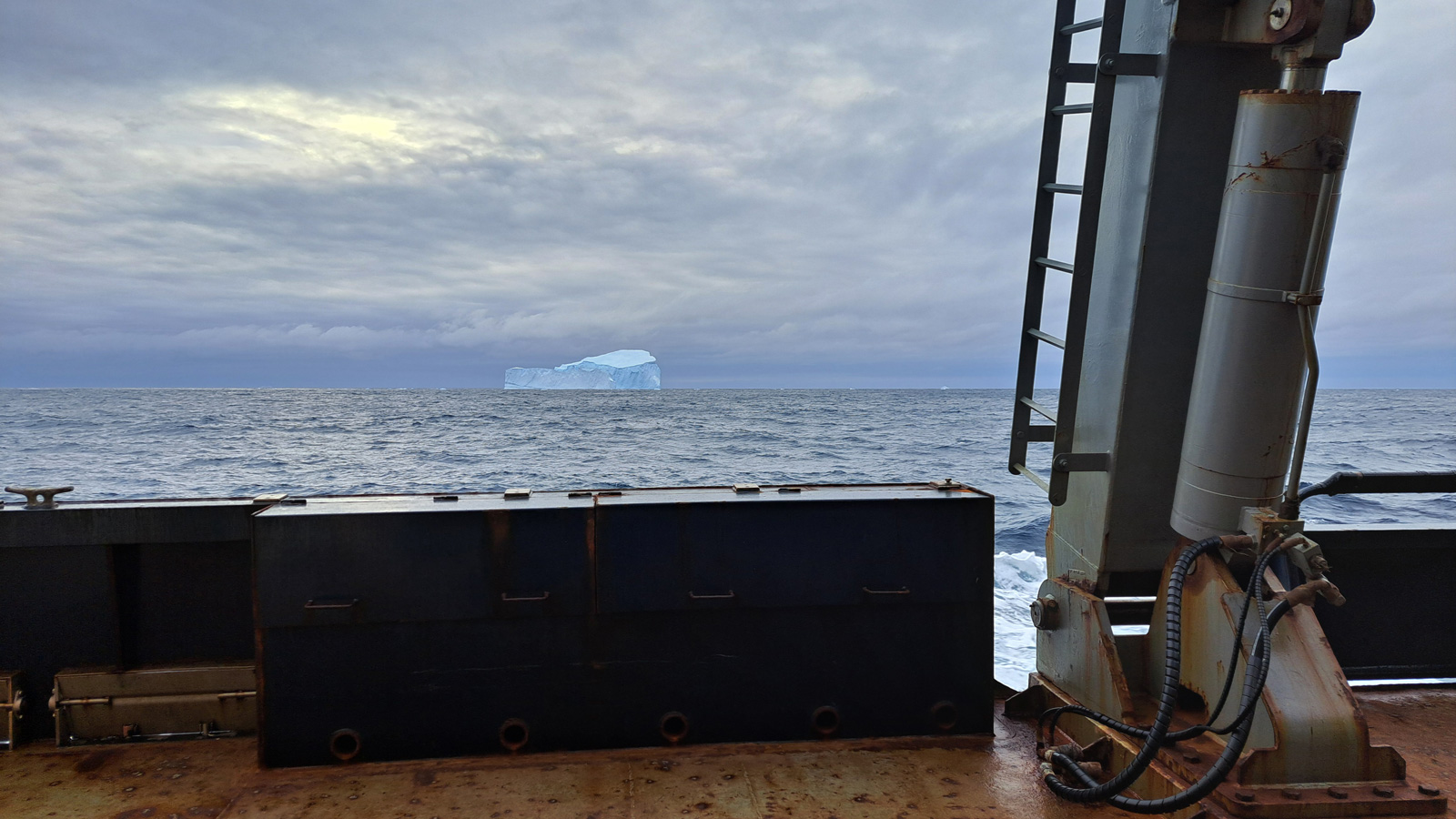Wind, waves, and icebergs pierced through morning fog – the A13.5 GO-SHIP cruise proved both tumultuous and rewarding with vast amounts of new data that bring the promise of groundbreaking future research.
After 52 days at sea, the A13.5 GO-SHIP cruise (short for “Global Ocean Ship-based Hydrographical Investigations Program”) returned to Cape Town, South Africa on March 23rd, successfully completing the voyage across the Equator and into the South Atlantic. Heading south from Cabo Verde on February 1st, the international team of researchers spent weeks collecting data essential for investigating global changes in ocean physics and chemistry – most notably, the uptake of atmospheric carbon under a changing climate.
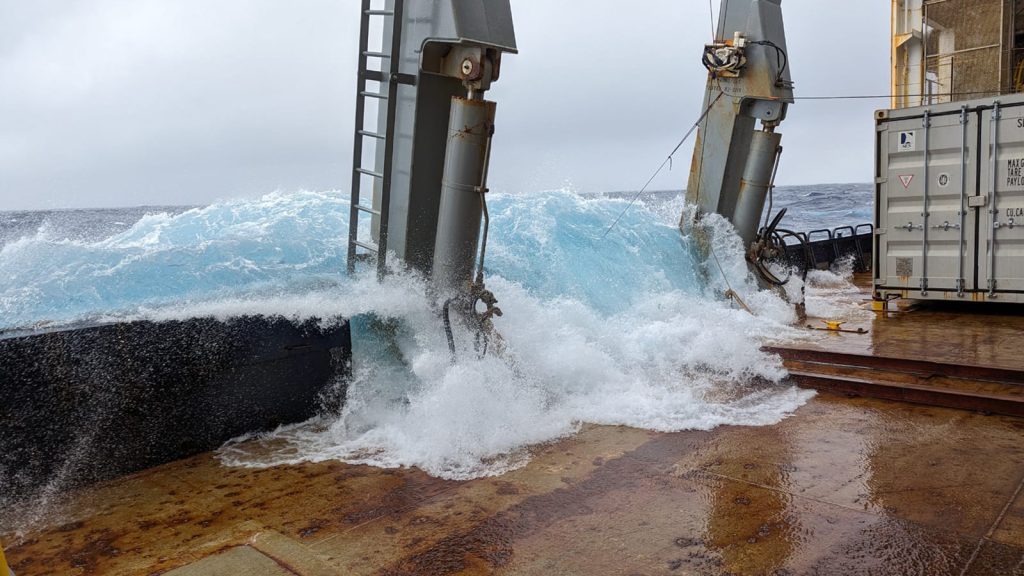
Through orange sunsets and wild seas with waves that rocked the 235-foot R/V Marcus Langseth, scientists at NOAA’s Atlantic Oceanographic and Meteorological Laboratory, Pacific Marine Environmental Laboratory, the Cooperative Institute for Marine and Atmospheric Sciences, and the Cooperative Institute for Climate, Ocean, and Ecosystem Studies were among the crew leading efforts to analyze water samples collected from the surface to the seafloor, thousands of meters below.
A13.5 is a transect extending from the coast of Ghana to Bouvet Island at the Southern end of the Mid-Atlantic Ridge, one of 58 transects across the globe designed by the international GO-SHIP program. This was the first time the A13.5 transect has been successfully occupied since 2010, as the pandemic delayed attempts in 2020 and 2022. Approximately every ten years, GO-SHIP transects are “re-occupied” to collect key measurements, including salinity, temperature, dissolved inorganic carbon, and the partial pressure of carbon dioxide (pCO2) – and now Environmental DNA (eDNA) – from samples throughout the water column to examine long-term changes in ocean properties. However, as the scientists and crew neared the Southern Ocean in the final weeks, they met an unexpected surprise – icebergs.
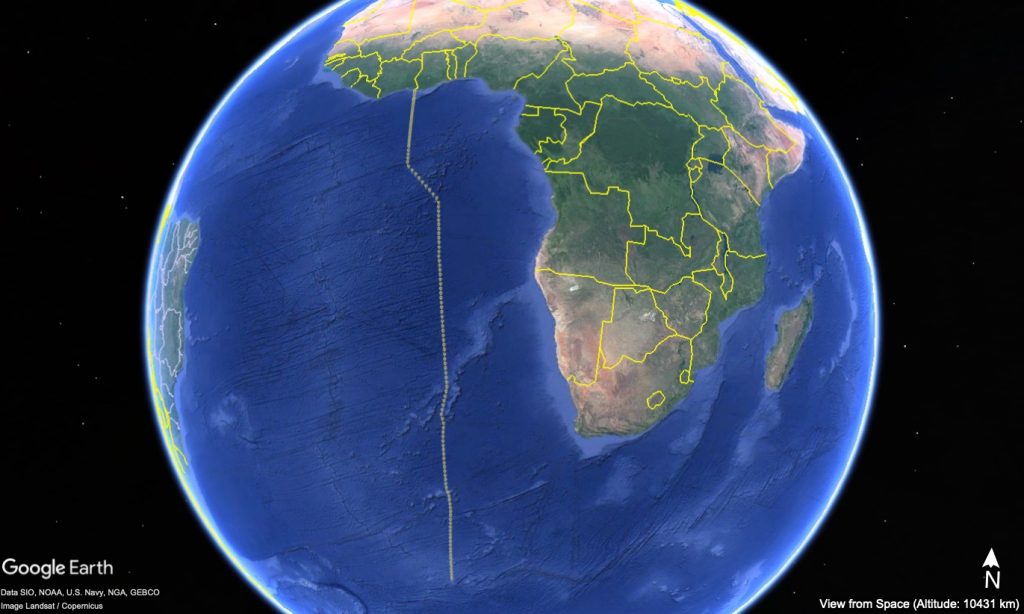
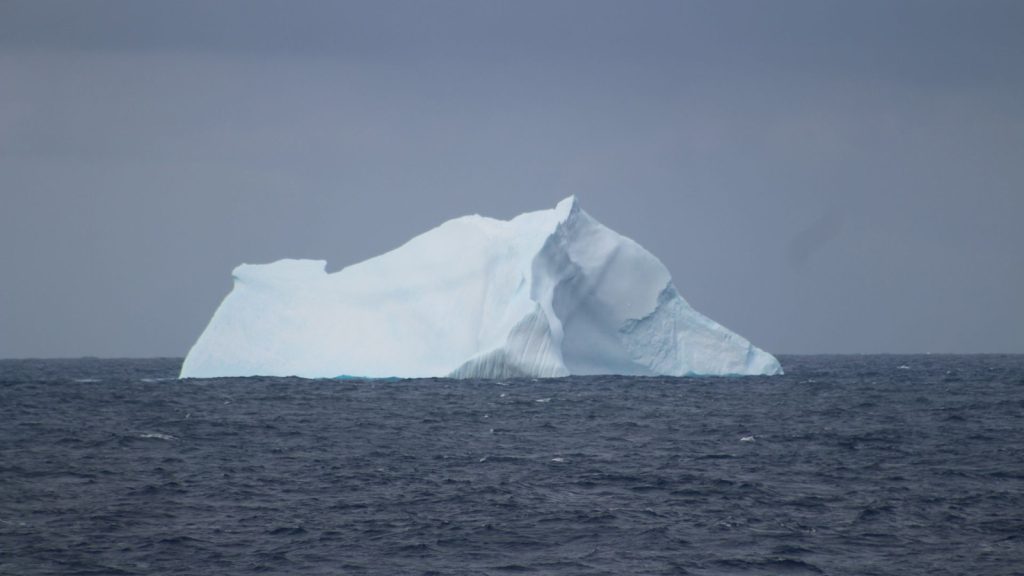
With sheer masses of ice floating through dense fog and smaller pieces hiding below the surface, the crew carefully navigated the frigid seas down to a latitude of 52°S, collecting measurements down to the seafloor using the CTD Rosette. A human-sized instrument, the CTD (“Conductivity, Temperature, Depth”) has a suite of sensors designed to measure physical properties and also collects seawater in 12-L “Niskin” bottles at 24 predetermined depths throughout the water column. While the sensor data profiles are processed immediately after each station, the seawater samples are analyzed once the CTD returns to the surface – up to four hours later. Scientists onboard deploy the CTD at a series of marked coordinates (i.e. “stations”) along the cruise track. The A13.5 cruise consisted of 113 stations.
“A typical 12-hour day on a research cruise consists of collecting and analyzing samples from depths ranging from near surface to 6,000 meters deep.”
-Chuck Featherstone, Scientist at AOML
Adding to decades of data monitoring fluctuations in the ocean’s uptake of heat, carbon, dissolved oxygen, and other elements across the globe, this cruise marks the first time measurements of environmental DNA have been collected along this transect. Environmental DNA (eDNA) is the DNA of whole or partial marine organisms or their traces sloughed off in the open ocean. As part of the emerging Bio-GO-SHIP initiative, measuring eDNA provides key insights to the biodiversity and ecosystem impact of plankton communities – specifically here, the south Atlantic. By measuring eDNA for the first time, scientists are establishing a baseline to better understand how climate change will impact marine organisms in the future.
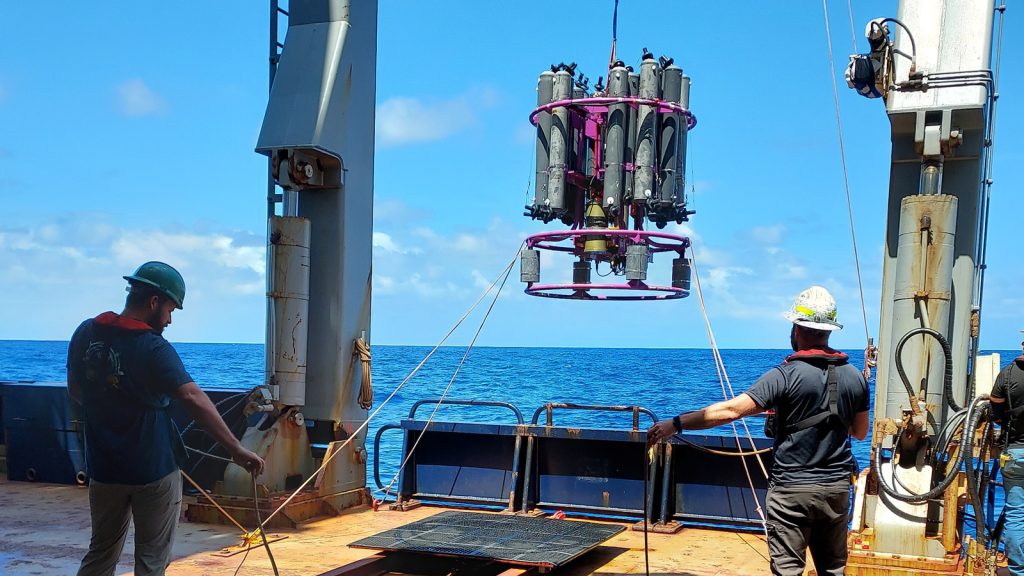
In addition to this ship-based sampling, an array of autonomous oceanographic instruments, including 11 Biogeochemical-Argo floats, four Core Argo floats, one Deep Argo float, seven Electromagnetic Autonomous Profiling Explorer (EM-APEX) floats, and 18 surface drifters were deployed along the cruise track. These instruments collect crucial chemical and physical ocean measurements as they drift with large ocean currents for months on end. This near-continuous ocean monitoring provides additional data, filling in the data gaps between the decadal GO-SHIP cruises, that will continue to advance global research in ocean chemistry and physics.
“Being a part of all three A13.5 attempts, I am happy to have been a part of the team to successfully complete the cruise. Carrying out a GO-SHIP level survey is not without its challenges, however, all participants involved overcame these difficulties and acquired data we have been chasing for the last four years.”
– Ian Smith, a CIMAS Research Associate onboard the A13.5 cruise.
The GO-SHIP program has collected millions of data for more than a decade, and this research is becoming increasingly important as we observe climate extremes. GO-SHIP observations are essential to study the Atlantic overturning of mass, heat, and freshwater transports. One recent study stemming from thirty years of data collected on GO-SHIP and other repeat hydrographic cruises revealed a potential weakening of the ocean’s ability to store carbon as global emissions continue to rise.
While emphasizing the need to reduce carbon emissions in order to meet the goals of the Paris Agreement, this study only underscores the crucial role GO-SHIP cruises continue to play in monitoring the global ocean. Congratulations to the science team and crew on a successful voyage!
The A13.5 GO-SHIP cruise was funded by the NOAA Global Ocean Monitoring and Observing program and the National Science Foundation.
